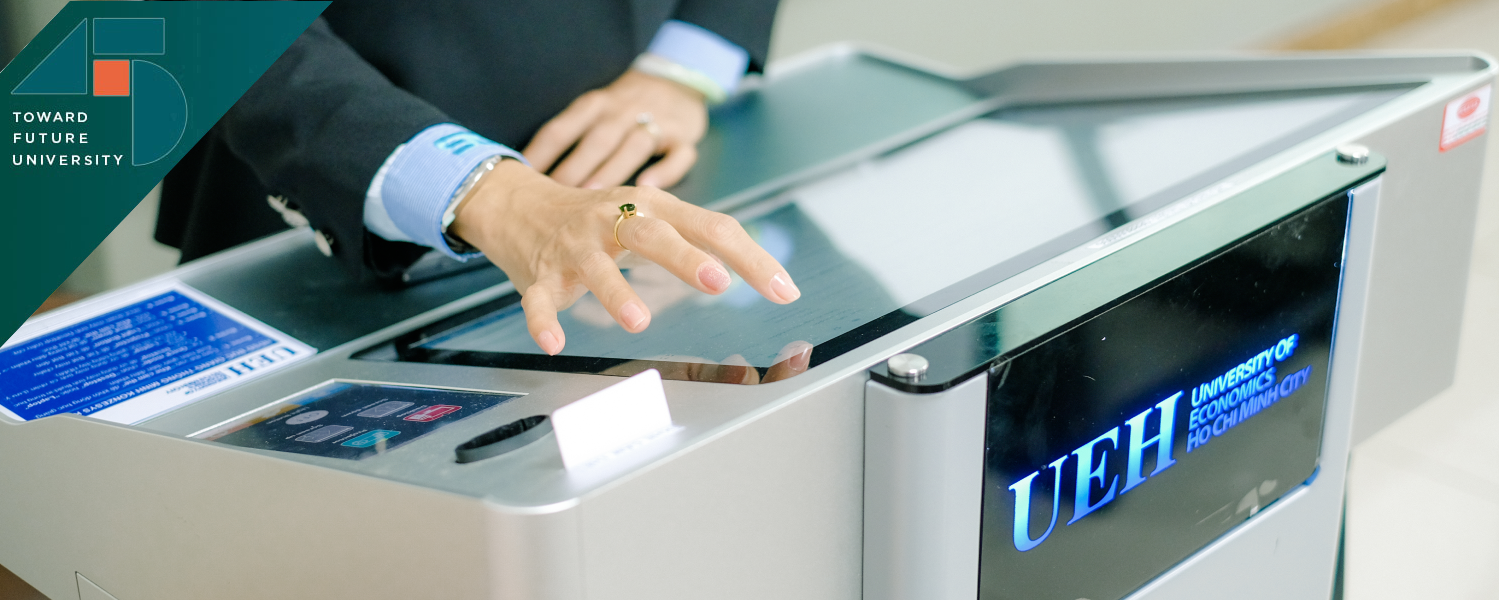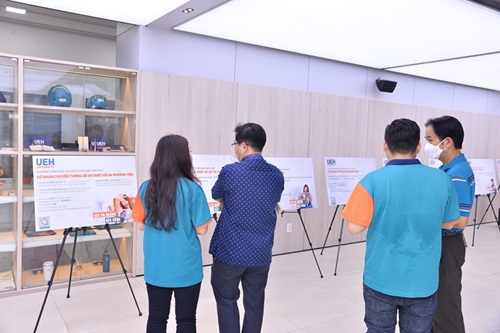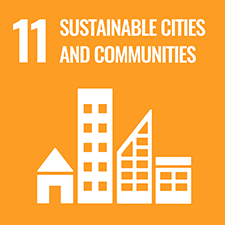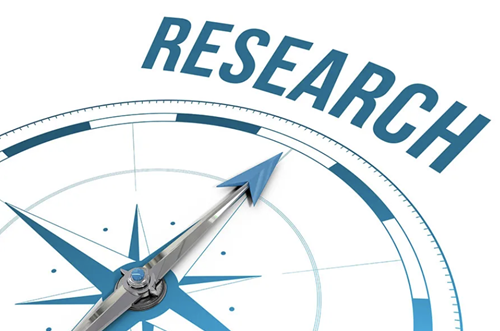
Towards Being A Smart University Through Comprehensive Digital Transformation: One Representative Case Of University Of Economics Ho Chi Minh City
20 Nov, 2021
Globalization and Industrial revolution 4.0 have been comprehensively and deeply shaping all aspects of life while traditional fields are constantly shifting in an increasingly flat world. Education is one highly competitive business and Smart University is born as an alternative to traditional universities. Upon synthesizing theoretical foundations, analyzing and inheriting from previous studies, the authors from University of Economics Ho Chi Minh City (UEH) has conducted one research on analyzing the opportunities and the challenges towards UEH in particular and those of other universities in general during this ‘becoming-intelligent’ process. From this foundation, this author group would like to suggest some solutions towards Smart University development.

Smart University – Inevitable transformation of education industry in the 4.0 era
In the current period of rapid technological development, education, admittedly, is one highly competitive business. To adapt to Industrial revolution 4.0, universities have been adjusting their operational strategies to survive. Smart University was born as an alternative to traditional universities. With Smart University, technology becomes an integral tool towards learning, researching, serving learning and other related tasks; concurrently, accumulation and restructuring processes towards becoming a Smart University have been considered as an inevitable process that universities will have to go through in the future.

Smart Library at UEH
At current universities in Vietnam, the application of information technology in particular and that of 4.0 technology in general are being limited without synchronization. Therefore, the transition implementation from a traditional university to smart university is being in its early stage. The formulation and development of a strategy serving the change-promoting process towards Smart University is an urgent but open issue although these issues have received much attention from academic communities from many countries around the world.
Approaching Smart University by means of comprehensive digital transformation
On behalf of UEH researcher team on Smart University issue, Dr. Bui Quang Hung – Vice President of UEH – illustrated: “Smart University concept, actually, can be approached from various perspectives. From the perspective of what UEH is performing and researching, Smart University concept is generalized as a higher education institution oriented to digital transformation and applying digital infrastructure, digital human resources, digital data, digital technology to provide personalized learning services to all learner generations, meeting the requirements of lifelong learning and sustainable development. This is a very important idea aiming at building a Smart University.
In other words, " being smart - smartness", to put it more simply, refers to innovative solutions for handling problems and challenges arising during university operation for its sustainable development. It should be noted that technology tool, in Smart University, is to help solve problems; it does not mean that applying technology equals to being smart. It is the Innovative solutions to university challenges is labeled smart.”

QR code system integration for booking and book borrowing at UEH Smart Library
Besides the components similar to those of traditional universities, Smart Universities comprise the major specialized components. Nguyen Huu Duc et al. (2020), on researching on smart university implementation in Vietnam, proposed a model of fundamental elements of smart university (V-SMARTH model) including as follows:
Digital Resources: Being the fundamental element of Smart University and online teaching-and-learning. Digital resources refer to the use of digital textbooks with many features superior to traditional textbooks and electronic textbooks (e-textbooks); listing as: directly monitoring and managing the learning process and academic results, assessment and testing outcomes; allowing connections to external learning resources. In particular, both teachers and learners can develop this digital resource.
Open educational content: Being an important feature in Smart-University-mission implementation regarding flexible and personalized training. Open educational content consists of: open learning materials; open information, online MOOC lectures, open training programs and mobile contents and so on. In addition, digital resources refer to the reosurce connection among different universities, in which shared culture is considered as a criterion in evaluating the quality and effectiveness of Digital resources.
Virtual educational environment: Being an environment that allows to combine teaching and assessment activities on an online platform with a variety of classroom models (common class, special class, integrated classroom and creative experiential classroom) with different teaching-learning methods (problem-based teaching, project-based teaching, discussion, interdisciplinary integration, experiential teaching and learning) as well as additional facilities; listing as: virtual labs, virtual libraries and virtual learning devices. In addition, Virtual educational environment also provides online monitoring, testing and assessment to help assess learners more flexibly and comprehensively.
Tailored (Personalized) Learning Needs: Reinforcing the flexibility of the education system and building customized curriculum that aligns with personal interests and future-oriented careers. Teaching and learning can follow a fixed route with many forms (online or face-to-face) or an individual-oriented program depending on interests, needs and abilities.
Interactive Educational Environment: Referring to teaching learning through an interactive web platform. This interaction includes interaction between learners and teachers, interactions among learners and interactions between learners and digital resources. This learning type can take place anywhere with full contents. This interaction not only promotes sharing and a culture of sharing but also brings downsides regarding copyright, intellectual property, ethics and academic integrity.
Digital infrastructure: Referring to digital legal infrastructure assurance, digital human resource infrastructure, digital data infrastructure and digital technology infrastructure are for Smart University development.
Nguyen Huu Duc et al. (2020), with the purpose of intelligence level assessment of Smart University, proposed the 5-level intelligence of Smart University as follows: Connection - information acquisition and connection; Conversion - information transformation and digitization; Cyber - analysis and diagnosis; Cognition - identification and prediction; Configuration - optimization.
Level 1 – Information acquisition and connection (Connection): University systems are capable of collecting information and connecting stakeholders in learning-related issues; listing as: learning environment, teaching methods, learning objects, teachers’ teaching styles. These systems can be customized to adapt to different devices (for example: computers, tablets, phones or other operating systems like iOS and Android). In addition, the systems are capable of acquiring and managing information regarding all objects, events and processes on campus. For example, sensors are used to record data concerning the surrounding environment (for example: electricity usage, lights, temperature, humidity and so on). Smart card readers are to open doors of lecture halls, computer rooms, classrooms and enable features/software/hardware. Facial, voice, and gesture recognition systems and corresponding devices are to retrieve and process data; listing as: attendance, class activities and so on.
Level 2 – Conversion - information transformation and digitization (Conversion): From the information collected and managed at level 1, systems in level 2 have the ability to connect them together and bring statistical results. For example: students’ degree of attendance, students’ academic results, lecturers’ sum of teaching hours, students’ assessment regarding lecturers in-charge, students’ registration level by individual lecturer, current situation related to classroom and laboratory usage.
Level 3 – Analysis and diagnostics (Cyber): From analysis results at level 2, the system at level 3 has the ability to analyze, make diagnoses and learn from the results so as to perfect the system. For example: (i) After collecting data on students’ learning outcomes, this system is able to analyze the reasons why students do not get better results; listing as: studying too many subjects in a semester, missing too many lessons or (ii): From collecting information related to classes with too few students registering, the system can analyze reasons: listing as: lecturers’ quality, unsuitable class time for students and so on.
Level 4 – Identification and prediction (Cognition): After obtaining the analysis results from level 3, the system at level 4 will use these results to forecast possible outcomes and provide solutions. For example, this system is capable of predicting students’ academic results and lecturers’ teaching quality (student participation, student understanding) as well as the enrollment management system to predict and control changes in annual student numbers, to forecast on which resources students spend most time and to ask instructors to provide additional resources sharing similar relevant properties or Campus-wide Safety System to predict, identify and response appropriately and inappropriately within UEH campus.
Level 5 – Optimization (Configuration): Smart University has the ability to self-change, optimize and self-maintain the internal structure purposefully. For example, the system automatically identifies systems, parameters, sensors and features in a smart classroom that are appropriate for the subject, class characteristics, instructors in the way that sensors determine whether students are in the classroom or not or whether all lights are on pr not and so on and adjust accordingly; the system automatically redefines the system, hardware, software and features in an appropriate smart classroom that is suitable for each lecturer, self-healing systems in case of an incident (for example: the server automatically being locked and self-recovering when a virus invades and so on).
Comprehensive digital transformation towards Smart University: From the case of University of Economics in Ho Chi Minh City to solution proposal for universities in Vietnam
In accordance with the assessment regarding current deployment status of existing commercial University components at University of Economics Ho Chi Minh City - UEH following V-SMARTH model (Nguyen Huu Duc et al., 2020), UEH is classified in a group of universities that are ready to be smart in the transition from a traditional university to a smart university through a large proportion of lecturers and administrators participating in this digital transformation process, a part of the activities have been standardized while a few have been quantified. Practical experiences and implementation at UEH have been further shared by Dr. Bui Quang Hung – UEH Vice President as follows:

Dr. Bùi Quang Hùng – UEH Vice President
* Dear Dr. Bui Quang Hung, would you kindly share further information regarding the current situation of Smart University deployment at Ho Chi Minh University of Economics in the recent years?
Dr. Bui Quang Hung: It could be stated that digital transformation at University of Economics Ho Chi Minh City was deployed very early, more than 10 years ago. Until the present time, UEH has had more than 60 applications in all activities from teaching, research and administration besides digital transformation campaigns serving the community.
In terms of UEH priority in the next 5 years, UEH does aim at Smart university components:
1st: To develop a digital technology platform in a sustainable way;
2nd: To develop Digital communication;
3rd: To enhance the learning environment experience at UEH;
4th: To upgrade digital support in management, teaching and learning;
5th: To promote scientific research management towards technology application, digital transformation and AI orientations;
6th: To develop community relationships. For example, UEH recently organized a project to support high schools in digital transformation implementation towards teaching and learning in Covid-19 pandemic context.

Way Finding system at UEH campuses (Intelligent guidance system to the nearest Lecture halls, Offices, Functional Boards and Bus routes)
* Smart Universities are, definitely, the destination for sustainable development and innovation in higher education in the context of the industrial revolution 4.0. From UEH implementation experience, which solutions would you kindly suggest towards a Smart University in Vietnam?
Dr. Bui Quang Hung:
“I would like to raise some solutions from my personal.
First, from management agency perspective, we have discussed too much about smart universities; however, a complete collection of indicators or models for a smart university has not been introduced yet. This is an important foundation for the State to grant certain investment levels for universities; especially, public universities that are implementing digital transformation.
Second, as far as we are concerned, there must be technology application in digital transformation. The fact that funding for this is an investment, not an annual expenditure requires a lot of money. This should demand investment from the State, a socialization mechanism in digital transformation at universities.
Third, human resources, in my opinion, plays the very important role; especially, leadership and manager teams in digital transformation implementation. What I mostly emphasize is the role of senior leaders in inspiring, sharing vision, leading as well as supporting university members towards digital transformation implementation. In the digital transformation in universities, as I did mention above, technology issue is not important; what matters is the "soft" factor, rather than the human issue, that decides the success of this digital transformation process”.
Fourth, it is necessary to have a strategy and a plan for digital transformation. It should be emphasized that we must have the right approach from the beginning so as not to waste time in the approaching process or funding investment. My point of view is that: to do first what is easy whereas what is complicated is saved for later. It is necessary to gradually increase the whole university-team consensus because the digital transformation process takes time,
Fifth, the need for internal communication is completely crucial because this factor determines awareness, initiative and consensus of the entire staff in accepting and agreeing to be ready for changes related to digital conversion.
Sixth, each university, along with the digital transformation process, must build and apply a modern university governance model.
Last but not least, seventh, that digital transformation means security risks is related to the process of information technology application and information security assurance. This issue must be paid attention to during digital conversion process”.
To sum up, accumulation and restructuring process to become Smart University is considered an inevitable process that universities should have to go through in the future. Currently, many opportunities are available for Smart University development in Vietnam: listing as: timely and correct direction of the State towards the transformation of higher education institutions, human resources at university educational institutions or strengths in technology application in Vietnam. Nevertheless, along with advantages above, there exist many challenges in leadership, strategy development, employees’ consensus towards change acceptance, information security issue; especially, the issues related to digital transformation cost.
Please have the full version of “Towards being a Smart University through comprehensive digital transformation: one representative case of University of Economics Ho Chi Minh city” research paper here.
Author group: Professor. Dr. Nguyễn Đông Phong; Dr. Bùi Quang Hùng; Dr. Phan Thị Bảo Quyên; Ma. Phan Tấn Lực; Dr. Lê Nhật Hạnh (UEH)
This paper is in Series Spreading research and applied knowledge from UEH, we would like to invite dear readers to look forward to Podcast ECONOMICS NUMBER #13 “CONSUMER PRICE INDEX FROM BIG DATA PERSPECTIVE”
Edited: Department of Marketing and Communication
Paper & podcast are edited from the interview conducted VOH E-Newspaper (Further information can be searched )






